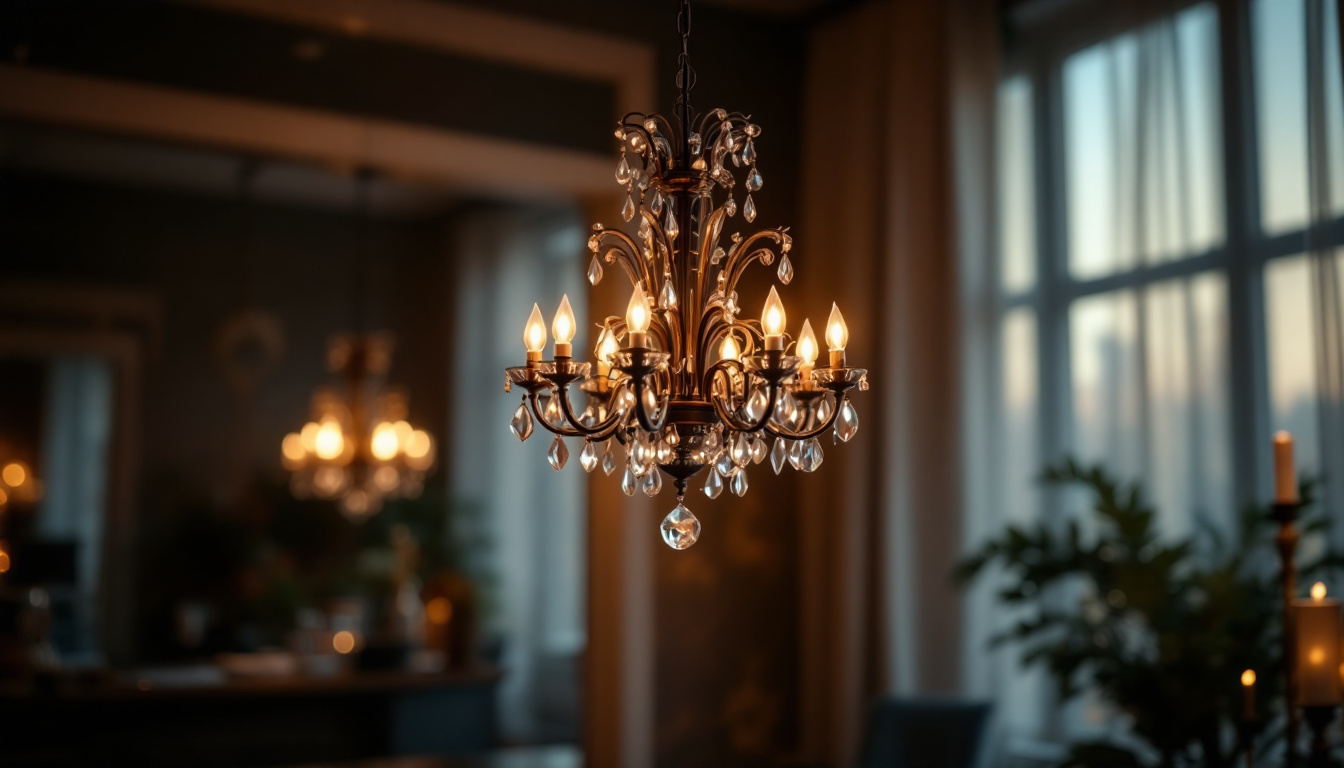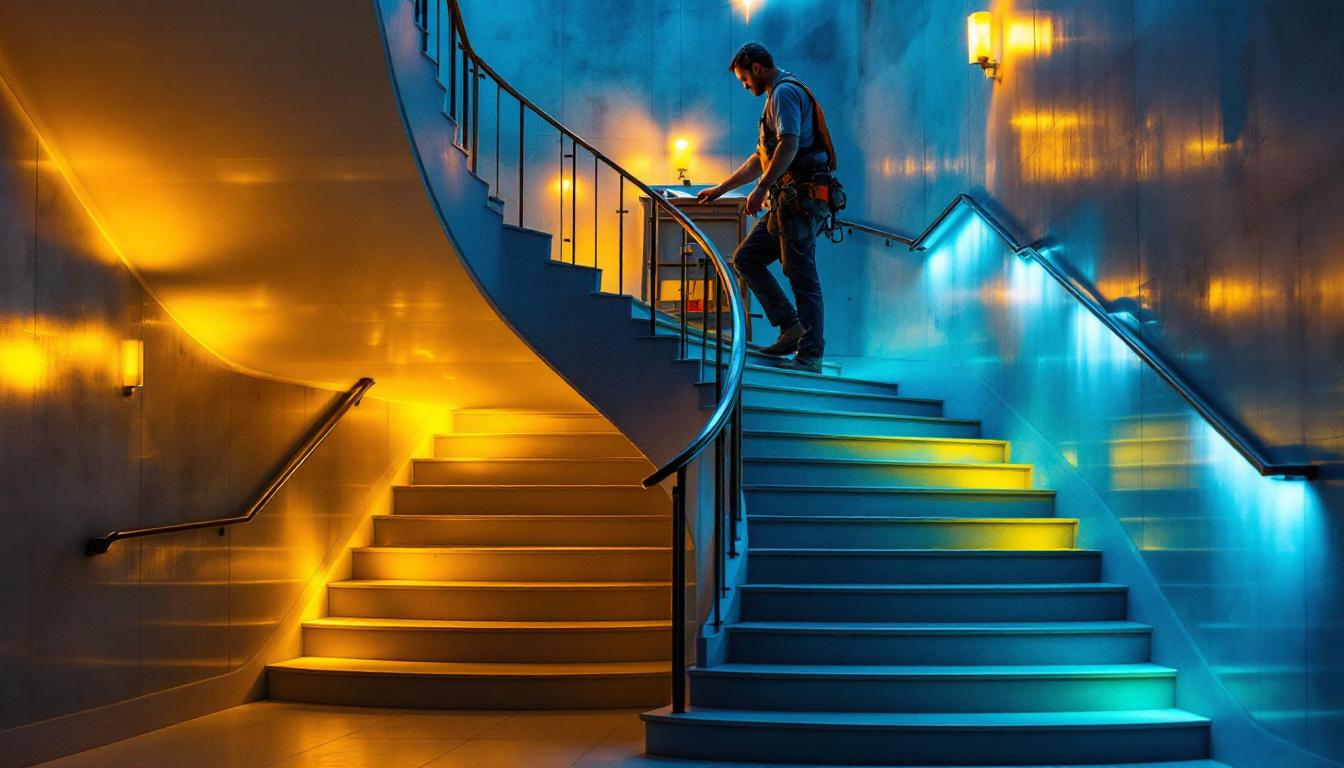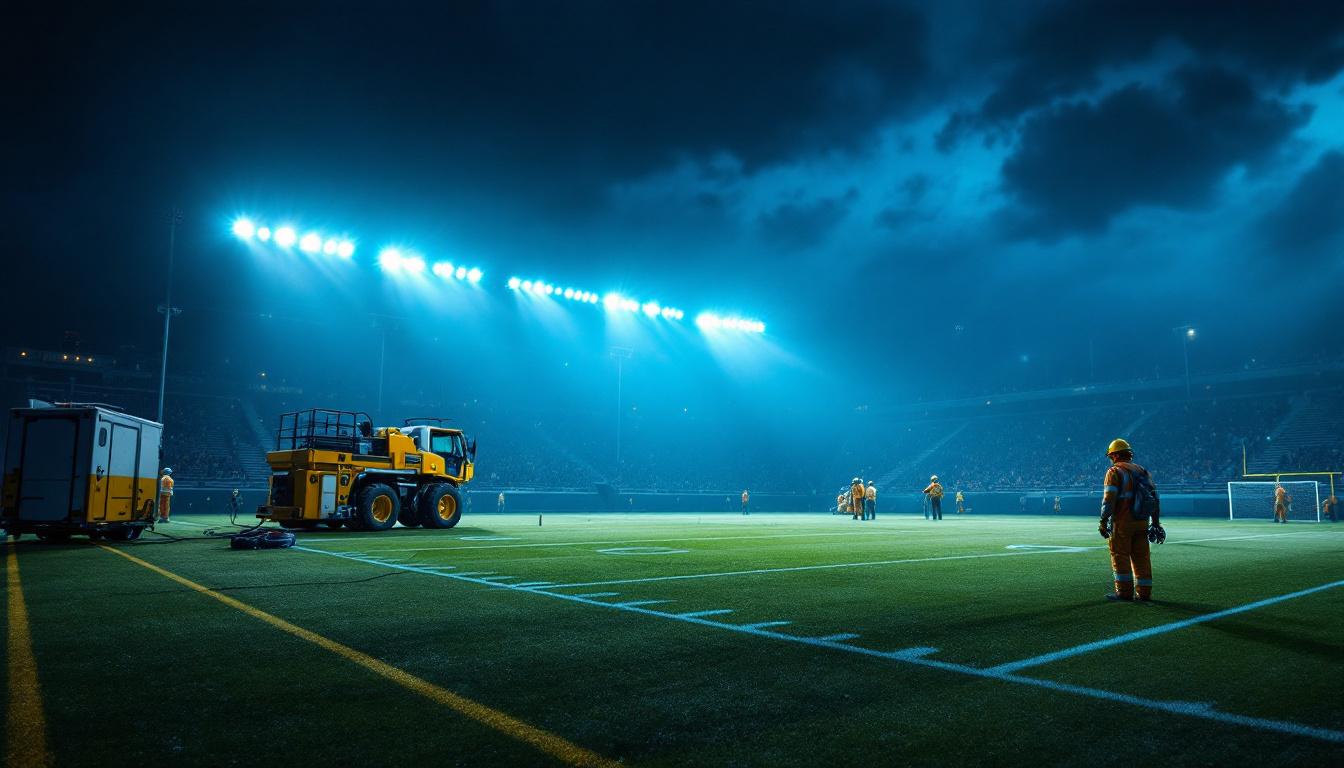
Chandelier lighting is an exquisite choice that adds elegance and sophistication to various spaces. As a lighting contractor, understanding the nuances of chandelier installation and design can elevate your service offerings and enhance your clients’ experiences. This article will delve into the essential aspects of chandelier lighting, including styles, installation tips, and maintenance considerations.
Chandeliers come in a myriad of styles, each catering to different aesthetics and functional needs. Familiarizing yourself with these styles will enable you to recommend the perfect chandelier for any project.
Traditional chandeliers often feature intricate designs, with materials like crystal, glass, or wrought iron. These pieces are typically characterized by multiple arms, ornate detailing, and a classic silhouette. They are perfect for formal dining rooms, grand entryways, and ballrooms.
When working with traditional chandeliers, it’s essential to consider the scale of the room. A large chandelier can serve as a stunning focal point, while a smaller one may be more appropriate for intimate spaces. Additionally, the choice of lighting can greatly influence the atmosphere; warm-toned bulbs can create a cozy, inviting glow, while cooler tones may offer a more sophisticated ambiance. Pairing a traditional chandelier with dimmable features can also enhance its versatility, allowing for adjustments based on the occasion.
In contrast to their traditional counterparts, modern chandeliers lean towards minimalism and clean lines. These designs often incorporate materials like metal, glass, and even unconventional elements such as wood or fabric. They are ideal for contemporary homes and commercial spaces that aim for a sleek, updated look.
As a contractor, understanding the balance of light and form in modern designs will help you guide clients in selecting fixtures that complement their decor while providing adequate illumination. Moreover, many modern chandeliers are designed with energy efficiency in mind, utilizing LED technology that not only reduces energy consumption but also offers a longer lifespan. This aspect can be a significant selling point for eco-conscious clients looking to make sustainable choices in their lighting solutions.
Rustic and industrial chandeliers have gained popularity in recent years, appealing to those who appreciate a more relaxed, vintage vibe. These chandeliers often utilize reclaimed materials, exposed bulbs, and rough finishes, making them perfect for lofts, cafes, and country homes.
When installing these types of chandeliers, consider the overall theme of the space. A well-placed rustic chandelier can enhance the ambiance, while an ill-suited design may clash with the environment. Additionally, integrating these fixtures with other rustic elements, such as wooden beams or stone accents, can create a cohesive look that ties the entire room together. The use of Edison bulbs in these designs not only adds a nostalgic charm but also provides a warm glow that complements the raw materials typically found in rustic and industrial settings, making the space feel inviting and lived-in.
Installing a chandelier requires careful planning and execution. As a lighting contractor, you must be aware of the various factors that can affect the installation process.
Chandeliers can vary significantly in weight, and it’s crucial to ensure that the mounting structure can support the fixture. Always check the manufacturer’s specifications for weight limits and use appropriate mounting hardware. In some cases, additional support may be necessary, especially for larger or heavier chandeliers.
Installing a ceiling medallion can also provide added support and enhance the aesthetic appeal of the chandelier. This decorative element can serve as a transition between the ceiling and the fixture, adding a touch of elegance. Furthermore, ceiling medallions come in various styles, from classic to contemporary, allowing you to match the decor of the room seamlessly. Choosing a medallion that complements the chandelier can elevate the overall design and create a cohesive look.
Determining the correct height for chandelier installation is vital for both functionality and aesthetics. A general rule of thumb is to hang the chandelier approximately 30 to 36 inches above a dining table or kitchen island. In entryways, chandeliers should be hung at least 7 feet above the floor to avoid obstruction.
Consider the room’s dimensions and the chandelier’s size when determining placement. A well-placed chandelier can create a stunning focal point, while improper placement may lead to an awkward visual balance. Additionally, consider the surrounding furniture and architectural features, as these can influence how the chandelier is perceived in the space. For instance, in a room with high ceilings, a larger chandelier can draw the eye upward and create an illusion of height, while smaller fixtures may get lost in the expanse.
Electrical wiring is a critical component of chandelier installation. Ensure that the existing wiring is adequate for the chandelier’s wattage and that it meets local electrical codes. If necessary, consult with a licensed electrician to make any upgrades or modifications.
Additionally, consider incorporating dimmer switches for chandeliers to allow clients to adjust the lighting according to their needs. This feature enhances the versatility of the fixture and can significantly improve the ambiance of a space. Moreover, think about the type of bulbs used in the chandelier; LED options are energy-efficient and come in various color temperatures, allowing for customizable lighting effects. The choice of bulbs can dramatically affect the warmth and mood of the room, making it essential to select the right type for the desired atmosphere.
Once a chandelier is installed, ongoing maintenance is essential to keep it looking its best. As a lighting contractor, providing clients with maintenance tips can enhance their satisfaction and prolong the life of their fixtures.
Dust and grime can accumulate on chandeliers, diminishing their brilliance. Regular cleaning is necessary to maintain their appearance. Advise clients to use a soft, lint-free cloth to wipe down the fixture regularly. For more thorough cleaning, they can use a mixture of water and mild soap, ensuring that the chandelier is turned off and cool before cleaning.
For crystal chandeliers, a gentle wash with a specialized cleaner can restore their sparkle. Remind clients to avoid harsh chemicals that could damage the finish or materials of the chandelier. Additionally, suggest that they consider using a microfiber cloth, which can trap dust more effectively and prevent scratching the delicate surfaces of the crystals. For those hard-to-reach areas, a soft-bristle brush can be an excellent tool to dislodge dirt without causing any harm.
Over time, bulbs will need to be replaced. Educate your clients about the different types of bulbs compatible with their chandelier and the importance of using the correct wattage to avoid overheating and potential damage.
Encourage clients to consider energy-efficient options, such as LED bulbs, which offer longevity and reduced energy consumption. This not only benefits the environment but also saves clients money in the long run. Additionally, inform them about the various color temperatures available in LED bulbs, as different hues can dramatically alter the ambiance of a room. A warm white light can create a cozy atmosphere, while a cooler light can enhance a modern aesthetic.
Lastly, recommend that clients conduct periodic inspections of their chandeliers. This includes checking for loose connections, frayed wires, or any signs of wear and tear. Addressing these issues promptly can prevent more significant problems down the line.
As a contractor, offering to perform these inspections as part of your service can enhance your reputation and build long-term relationships with clients. Furthermore, remind clients that seasonal changes can impact their chandeliers; for instance, humidity levels can affect the integrity of the materials. Suggest that they schedule inspections at least twice a year, ideally before and after the winter months, to ensure their fixtures remain in optimal condition. This proactive approach not only safeguards their investment but also allows them to enjoy the full beauty and functionality of their chandelier for years to come.
In addition to installation and maintenance, providing design tips can help clients choose the right chandelier for their space. Here are some considerations to keep in mind.
The color and finish of a chandelier can significantly impact the overall aesthetic of a room. Encourage clients to choose finishes that complement their existing decor. For instance, a brass chandelier can add warmth to a traditional space, while a chrome finish may suit a modern setting.
Consider the color palette of the room when selecting a chandelier. A bold, colorful fixture can serve as a statement piece, while a more neutral design can blend seamlessly with the surroundings.
Choosing the right size chandelier is crucial for achieving a balanced look. A chandelier that is too large can overwhelm a small room, while one that is too small may get lost in a larger space. Use the room’s dimensions to guide your recommendations, ensuring that the chandelier enhances rather than detracts from the overall design.
As a rule of thumb, add the room’s length and width in feet to determine the ideal diameter of the chandelier in inches. This formula can serve as a helpful guideline for clients.
Chandeliers can be a part of a layered lighting design, which includes ambient, task, and accent lighting. Encourage clients to consider how the chandelier will work in conjunction with other light sources in the room. This approach will create a well-lit, inviting atmosphere that meets their functional needs.
For example, in a dining room, a chandelier can provide ambient light, while wall sconces or table lamps can offer task lighting for reading or other activities. This layered approach enhances the versatility of the space.
Chandelier lighting is a timeless choice that can transform any space into a luxurious environment. As a lighting contractor, understanding the various styles, installation considerations, and maintenance requirements will empower you to provide exceptional service to your clients.
By offering design tips and ongoing support, you can help clients select the perfect chandelier that complements their style and meets their functional needs. Embrace the artistry of chandelier lighting, and watch as your projects shine brighter than ever.
Ready to elevate your lighting projects with the elegance of chandelier lighting? Discover the exceptional value and quality that LumenWholesale offers. Our spec-grade lighting products are designed to meet the highest industry standards, ensuring your installations shine with reliability and performance. Say goodbye to inflated markups and hello to unbeatable wholesale prices, with the added convenience of free shipping for bulk purchases. Make your next project a beacon of sophistication and value. Visit LumenWholesale today for Wholesale Lighting at the Best Value, and let us help you light up your client’s world with style and affordability.

Discover expert insights and practical advice from lighting contractors on maximizing the efficiency and effectiveness of indoor solar bulbs.

Discover the transformative power of grow lights in greenhouses with real-world success stories from lighting contractors.

Discover how stair lighting indoors is transforming spaces and offering a competitive edge for lighting contractors.

Illuminate your projects with ease using portable football field lights.